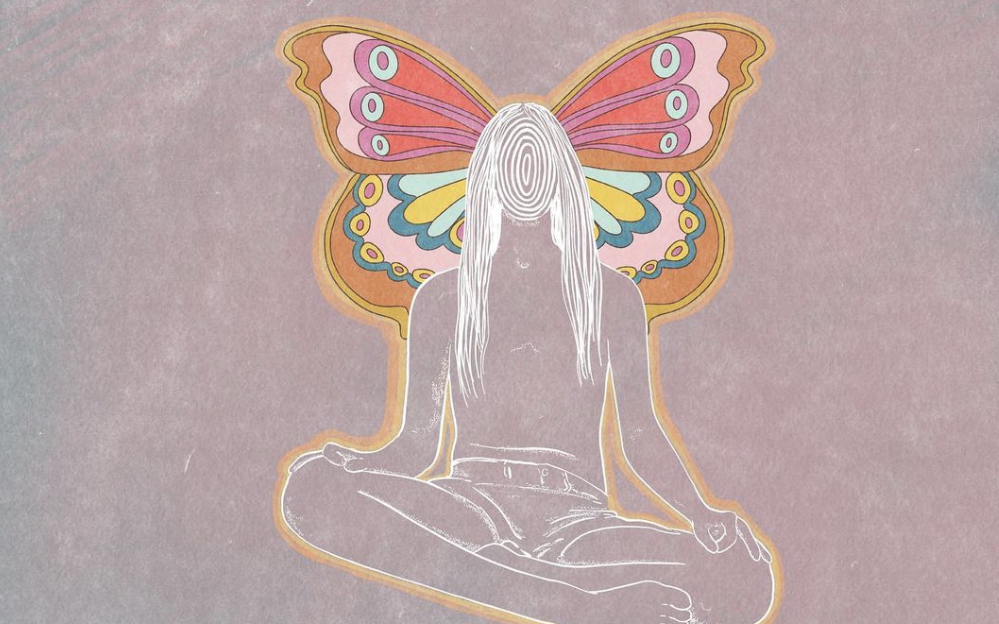Toward a ZenTech ethic
Is a meditation application a spiritual teacher like any other? In order to answer this question, we must first know what we are talking about. A mindfulness meditation application is a catalog of audio files that are instructions for meditation (which can also be called “guidances” or “guided meditations”). Imagine a kind of audio Netflix where, instead of a multiple choice of movies and series, it is voices that lead your attention… That’s what we could call the first layer.
The second is that these meditation apps are a concentrate of incentive techniques to accompany meditators in the realization of a demanding activity. Because, let’s face it, meditating is hard, meditating is boring, meditating is not very rewarding. Behind the scenes, a whole set of nudging tools is activated, as well as a system of gratification (or gamification), which are there to provide the brain with dopamine in order to reward the effort of remaining in the lotus position on a regular basis. These techniques, based on advances in cognitive science research, operate a well-oiled choreography (with the help of reminders, notifications or points that are accumulated) in order to make people want to maintain a meditation practice over time. Because if the benefits of meditation are obvious in the long term, in the short term, it can sometimes be regarded as a waste of time.
The third layer of a meditation application is the use of internet connectivity to link practitioners together. The community aspect of the web creates a sense of closeness and connection between users: each one is alone behind his or her smartphone, but has the feeling of being connected to others. One of the central features of these applications is the organization of moments where meditators can meet simultaneously through live sessions to have the feeling of practicing together.
We summarize: audio guidance, self-incentive techniques and connection to others are the three pillars of meditation applications. Mix it all together and you get a digital object that has become a must-have in the lives of millions of people.
Utilitarian or spiritual vision?
Now the million rupee question: does it work? Well, it depends on how you look at it. If by “does it work?” you mean “do the apps help reduce anxiety and stress, and provide better quality of sleep?”, then undeniably the answer is… yes. Research shows this and demonstrates it regularly. For example, between 2018 and 2021, several studies have proven that using a meditation app significantly improves well-being and reduces perceived stress, depressive symptoms and anxiety. From a medical perspective, meditation would be beneficial.
However, the issue becomes more difficult if one views mindfulness from a less utilitarian and more spiritual perspective. If one adopts the idea that meditation is something much broader than controlling one’s heart rate in the run-up to a presentation, then the question of the “effectiveness” (sic) of an application seems to shift somewhat. Because in a Buddhist approach, meditation is indeed a technique that aims at self-knowledge, inner freedom and connection to a subtle dimension of existence. Seen from this angle, the relevance of meditation applications could then be reformulated as follows: can one of these applications be an authentic path to enlightenment? This time, convictions prevail over facts. Everyone will be able to form his or her own opinion, but a plausible hypothesis would be that there is a condition to this: that the intention of the creators of the application is sincere.
ZenTech setbacks
During its digital conversion, meditation has — in part — become a consumer product. No more or no less than a patch that you buy on sale and stick on your pineal gland. Not only has it become part of the market, it has become a market on its own. Even a huge one, worth $533.2 million in 2022 (source : Insight Partners). “Meditation is a product,” to quote the guru and meditation teacher Osho in the Netflix documentary Wild Wild Country…
How did we get here? By the widespread use of online subscription services. Meditation apps are bought mostly on a monthly subscription basis, (between 7 and 18 dollars a month on average). Their business model (thus) resembles more that of a fitness club for grumpy brains than the logic of a temple open to all. Moreover, the Calm app (valued at more than 2 billion dollars) defines itself as the “Nike of meditation“, with the ambition to strengthening the attention and hydrating the mind. Acton Smith, the co-founder of Calm, says his goal is for his app to become for mental health what Nike has managed to do for physical activity: “Nike brilliantly, through marketing and partnerships, normalized it, and sprinkled a lot of cool on it,” he says. “We’re doing the same with Calm. That mental health wave is going to be just as big.“
Of course, building an application requires resources and it is only fair that its creators be paid, so that access to meditation via the digital medium is not free. On the other hand, what seems more questionable is that meditation has become a market in its own right, that of ZenTech, the name of this emerging sector gathering companies that use technology to sell inner calm. Because in the context of the AppStore, a market means… start-ups, shareholders and growth objectives. With this in mind, it can be tempting to sacrifice a meditation ethic in order to grow the user base. There is certainly a fine line to walk on, and this is not the place to hand out virtue points. But it is clear that some practices raise questions about the integrity of the teaching provided. And that some apps have clearly fallen into what Ronald Purser, professor of management at the University of San Francisco, describes as “McMindfulness” in his eponymous book (Repeater, 2019). Like a good burger, he describes in it the rise of a practice that “provides an immediate sense of pleasure but no spiritual nutrients over the long term.” For example, what about this app that pays its users in NFT (non-fungible tokens) to meditate ? Or this one that uses the voices of Harry Potter characters to recite instructions ? Not that we should defend a rigorous vision of meditation, but here we seem to be closer to Disneyland than to Varanasi…
Imagining the Patagonia of meditation
The digital transformation of meditation poses other problems, such as spending millions on advertising or choosing to focus on “pampering” content (stress management) over more “confronting” content (social engagement and the environment). By following this trajectory, there is a great risk that an app will become yet another digital comforter, a kind of mental spa that, under the guise of a wellness practice, looks more like a form of spiritual onanism. So of course, this digital capitalism has already had a considerable positive impact, by making meditation accessible to millions of people, who would probably have missed it without this filter. But in order for this support to be truly effective, we need to go back to the original intent: to help people walk an arduous path rather than make money off their stress.
Far from being technophobic, Buddhism believes in using the right means (upaya in Sanskrit) to achieve a result. This attitude invites constant re-examination of the technological means available to transmit meditation. Here are eight suggestions for how to move meditation apps into a new era.
> Community (sangha) is one of the pillars of meditation. Rather than a solitary practice, it is important to develop more spaces for meeting and socializing, both within applications (with online meditation groups, for example) but also by encouraging in real life (IRL) connection spaces, where meditators can sit together.
> In all meditation traditions, the teacher-student relationship is central. Offering individualized follow-up is essential to a student’s progress. For this, applications should offer the possibility of personalized guidance. It is a matter of opening a space for one-on-one (punctual obviously) meetings with their teacher of reference.
> It is necessary that the meditation teachers be the authority. Today almost every app are led by the CEOs, not the teachers. It is important that a new generation of guides — more technophile, probably — emerges, and that they become in charge of the strategic direction of the company. To do this, one can imagine the constitution of an ethical council of the company formed by the most experienced teachers.
> That the application belongs to the meditators, not to the shareholders. One can imagine an ownership model in the form of digital cooperatives, similar to the way meditation centers operate. There are technological solutions based on blockchain that allow this. The idea would be to create a Patagonia of meditation, with a foundation that ensures that the company’s ethical choices are respected, rather than favoring unbridled growth.
> Be transparent about the nudging and incentive techniques used to assume that it is a tool for improving discipline, while empowering the user.
> Implement the promises of mindful design, limiting as much as possible the dark patterns of digital marketing that subtract from users’ attention spans.
> Create an ethical label for the ZenTech sector, based on objective criteria inspired by Buddhist moral principles and in charge of providing an evaluation grid for technological meditation tools, in order to allow users to choose the application that accompanies them in an enlightened manner.
> Promote inclusiveness and diversity within apps. For now, meditation is still too much reserved for a white and wealthy population. We need to be able to make it accessible to other audiences by representing minority voices and offering subscription prices that are appropriate for each audience.
Obviously, these issues go far beyond the simple framework of meditation applications. They concern in fact all websites, software, apps and digital programs that aim at the spiritual dimension of existence, education or social justice. Thinking about an ethical, benevolent and sincere digital world is one of the conditions to conceive an emancipating role for technology, truly at the service of mankind.
Plus d'articles
Toward a ZenTech ethic
Is a meditation application a spiritual teacher like any other? In order to answer this question, we must first know what we are talking about. A mindfulness meditation application






